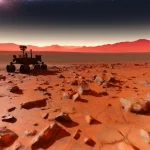Jupiter’s Great Red Spot continues to surprise scientists with its dynamic behavior. Recent observations by the Hubble Space Telescope reveal unexpected changes in the storm’s size and shape. These findings provide new insights into the atmospheric dynamics of the largest planet in our Solar System.
Past observations primarily focused on the stability of the Great Red Spot over decades. However, the latest data from Hubble introduces new dimensions to our understanding, highlighting more variability than previously recorded.
How is the Great Red Spot Changing?
The Great Red Spot is not only altering in size but also in both its length and width. Hubble’s high-resolution images captured over a 90-day period show the storm “jiggling” daily, a phenomenon not observed in earlier studies.
What Do Scientists Say About These Changes?
“This is really the first time we’ve had the proper imaging cadence of the GRS. With Hubble’s high resolution we can say that the GRS is definitively squeezing in and out at the same time as it moves faster and slower. That was very unexpected, and at present there are no hydrodynamic explanations.”
Amy Simon of NASA’s Goddard Space Flight Centre highlighted the unprecedented nature of these observations.
What Are the Future Predictions for the Spot?
The research team anticipates that the Great Red Spot will continue to shrink before stabilizing into a less elongated form. This stabilization is expected to occur as wind patterns within the storm adjust to maintain its new shape.
Understanding the mechanisms behind the Great Red Spot’s behavior is crucial for comprehending larger storm systems both on Jupiter and Earth. Insights gained from this study may enhance our knowledge of hurricane dynamics and atmospheric science.
The study contributes to NASA’s Outer Planet Atmospheres Legacy program, aiming to build a comprehensive time series of outer planet observations. By focusing on the Great Red Spot, the research advances our understanding of long-lived atmospheric phenomena in gas giants.
Jupiter’s Great Red Spot continues to be a focal point for planetary scientists, offering a natural laboratory for studying extreme weather systems. The ongoing observations by Hubble promise to uncover more about the complexities of Jupiter’s atmosphere.










